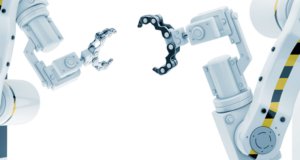Manufacturing operations use equipment that may be powered by or contain hazardous energy sources such as electrical, mechanical, hydraulic, pneumatic, chemical, or thermal energy. During repair or maintenance processes an unexpected release of energy could injure or even kill a worker.
Every year in B.C., workers are significantly injured or even killed when machinery is not properly de-energized and locked out. These accidents can be significant and life-altering and include:
- severed fingers and limbs
- crushing injuries
- electric shock
- burns
These accidents are preventable with an effective lockout/tagout program. De-energization and lockout/tagout prevent the release of this energy to protect workers.
A lockout program should include:
- Documented identification and inventory of hazardous energy sources
- Hazard identification/risk assessment
- Adequate procedures for lockout and de-energization
- Training and supervision of all workers at-risk
With the resources and information on this page, learn to identify when lockout/tagout is required, what are the associated risks, and what preventative measures can be put into place to promote a safe workplace.
Robots: Opening interesting doors





